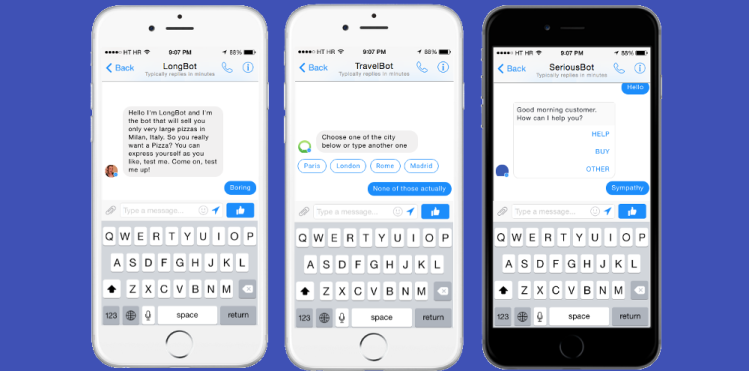Creating a chatbot is no walk in the park. While it’s true that now anyone can craft a good enough bot, it’s still easy to mess up a conversational UX. As for any creative enterprise, in bot design, the devil is in the details.
At BotSociety, we really care about chatbot design, so we have put together a small list of the most common mistakes people make while designing chatbots. Follow our tips and creating a fantastic final product will be a piece of cake!
Mistake 1: Writing text messages that are too long

Sometimes you might feel your bot has a lot to say, and you make it write long, wordy messages. But people don’t like reading long chat messages and will get bored, especially if you send many long messages in a row. Ask yourself: When was the last time I wrote that much to a friend? As a rule of thumb, consider splitting your messages if they take more than a line or two — or better yet, try to convey the same concept with the aid of a picture. Be creative!
Mistake 2: Letting conversations lead into dead ends

“Hello there”, “I’m here to serve you”, and “how may I assist you?” are not the best ways your bot can introduce itself. Users will be confused without a clear call to action. Most of them will just say hi and leave. What if you insert an interaction example? Something like: “Ask me where is the best hotel in Bangkok” or “Where would you like to eat tonight?” Be clear about the next step. The user has to know what they can say to move the interaction forward.
Mistake 3: Not giving character to your bot

There’s a thin line between a good bot and great bot, and you can cross it by giving your bot a distinct, actual personality. Just cramming together a series of answers without a defined tone of voice leaves the user with a bittersweet sensation. Take this as an example: What would you think of a website that changes menus every time you switch to a page? If you can’t come up with a persona concept, just remember: Bots have hearts too!
Mistake 4: Not leveraging the data at your disposal

User data should be a powerful weapon in your arsenal. Facebook Messenger, for example, lets you know a user’s name, locale, and time zone. This is vital to provide a better user experience, and you should leverage this: Try having your bot call your users by name; offer to send a notification at a time convenient to their time zone; switch tone if the user is male or female; or post contextual info on the user’s location. “Where would you like to travel, Anna?” sounds really different from just “Where would you like to travel?”
Mistake 5: Making buttons and texts mutually exclusive

We often see designers using buttons and text interaction exclusively: for example, presenting buttons to click and then disabling free text. What works best is to use buttons as quick suggestions, and explain to the user that they can write free text as well. On Facebook Messenger, quick replies work great this way.
VentureBeat's mission is to be a digital town square for technical decision-makers to gain knowledge about transformative enterprise technology and transact. Learn More

